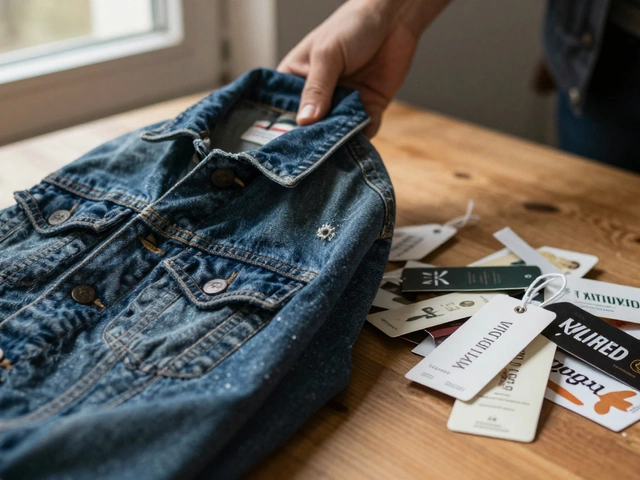Ever walked into a room and just wanted to wave a magic wand to clear the mess? The 20/20/20 rule for decluttering might be the next best thing. This method breaks down the process into bite-sized steps, so you don’t end up paralyzed by chaos. No need for color-coordinated baskets or expensive labels—this is about moving fast and making real progress.
The gist? You get rid of 20 items, spend just 20 minutes, and repeat this for 20 days. Sounds way less scary than tackling your whole house in one go, right? You don’t need a full weekend or a big cleaning crew. It’s designed for people who live real lives—busy, sometimes messy, and just trying to make things a little better one corner at a time.
Whether you live in a studio, a family home, or even if you share a place, this rule gently pushes you to focus on what actually matters. If your sock drawer, entryway, or bookshelf is driving you up the wall, the 20/20/20 rule gives you a starting point—and permission to go at your own pace.
- What Is the 20/20/20 Rule?
- Why Does This Rule Work?
- How to Start Using the 20/20/20 Rule
- Real-World Examples and Quick Wins
- Common Mistakes and How to Avoid Them
- Small Habits for Long-Term Results
What Is the 20/20/20 Rule?
The 20/20/20 rule is a super practical way to conquer clutter at home without freaking out or spending hours you just don’t have. It’s all about tackling mess in short, focused bursts that anyone can squeeze into a day. If you’ve ever stared at a messy room and thought, “Where do I even start?”—this is the guide you’ve been waiting for.
Here’s how it breaks down: over 20 days, you spend just 20 minutes each day picking out 20 items to either toss, recycle, donate, or move to their proper spot. That’s literally it. You set a timer for 20 minutes, grab a box or trash bag, and get honest about what’s just taking up space. No fancy tools needed.
- 20 items: Can be big or small: old magazines, random kitchen stuff, clothes you never wear, shoes no one in your house even likes, expired bathroom products—anything you can count that you’re ready to let go of or re-home.
- 20 minutes: Timer on. Grab, sort, and don’t overthink it. This isn’t about making every corner perfect. You’re just making fast decisions with a clear goal.
- 20 days: Stick with it for almost three weeks. That’s just enough time to see real changes, but not so long it feels endless. Experts say habits are easier to form when you repeat something simple every day, and 20 days is totally doable.
The beauty of the 20/20/20 rule is that it adds up way faster than you’d expect. In less than a month, you could be 400 items lighter (yes, really). You don’t need a giant chunk of free time or a whole bunch of fancy storage bins—just a timer, some bags, and maybe a little background music to keep things moving.
This method works for any room in the house. Start with the easiest drawer or surface. Often, the quick wins motivate you to keep going, and you’ll notice your home gets easier to clean and less stressful, almost without thinking about it.
Why Does This Rule Work?
This method isn’t just a random set of numbers. There’s real psychology behind the 20/20/20 approach, and that’s why people actually stick with it. Big decluttering projects can feel way too overwhelming. When your brain thinks there’s too much to handle, you’re more likely to do nothing at all. The 20/20/20 rule chips away at that mental mountain, turning it into a series of tiny hills you can tackle.
Here’s the science behind it: humans handle small, bite-sized tasks much better than giant, undefined projects. That’s why productivity experts often say to break work into chunks. With this rule, you’re focusing just enough to make progress, but not so much that you burn out and quit after day one.
Let’s talk time. By keeping each session to around 20 minutes, you lower what’s called “activation energy”—basically, the effort it takes to get started. Anyone can squeeze in 20 minutes before dinner or after work. And by spreading it out across 20 days, you’re building a habit, not a sprint session that leaves you tired and grumpy.
The magic of picking 20 items per session is that it’s just enough to notice a difference, but not so much you feel like you’re tossing everything you own. Research from UCLA’s Center on Everyday Lives and Families found that people feel less stressed in clutter-free spaces, but panic when asked to ditch too much at once. So with this rule, you’re avoiding stress but still getting the satisfaction of seeing your space clear out, bit by bit.
Here’s a quick rundown on why it sticks:
- 20/20/20 rule reduces overwhelm and makes it easy to start.
- Short sessions mean you can fit it into any routine, even the busiest ones.
- Repeating for 20 days builds lasting habits you don’t have to think about later.
- You see steady progress, which keeps you motivated to keep going.
This isn’t about being a minimalist overnight. It’s about creating enough momentum so you can actually enjoy your home—and not feel like decluttering is just one more giant chore on your list.
How to Start Using the 20/20/20 Rule
Getting started with the 20/20/20 rule isn’t complicated, but a little planning goes a long way. First off, pick a spot that bugs you the most. Maybe it’s the kitchen counter covered in random stuff, or your closet where you can’t find your favorite shirt. This rule helps you tackle high-frustration areas without getting stuck trying to do it all.
Here’s a simple way to roll it out:
- Grab three boxes or bags: one for trash, one for donations, and one for items you want to keep but don’t belong in the current area.
- Set a timer on your phone for 20 minutes. This keeps you in action mode, not perfection mode.
- Find 20 things you can let go of. Junk mail, old receipts, shoes you never wear, tupperware without lids—nothing is too small. The point is to make decisions quickly.
- Repeat this routine for 20 days straight, changing up the area as you go (or stick to one zone until it feels lighter).
Don’t overthink what counts as an “item.” One unmatched sock is an item. That pen that doesn’t write? Also counts. It adds up fast, and you’ll be shocked how much space you free up—even with things you thought you’d miss.
If you want to see progress and stay motivated, track your results as you go. Here’s a quick example of how much stuff you could clear out in just 20 days by following the 20/20/20 rule:
| Days | Items Removed Each Day | Total Decluttered Items |
|---|---|---|
| 1 | 20 | 20 |
| 5 | 20 | 100 |
| 10 | 20 | 200 |
| 20 | 20 | 400 |
If you miss a day, don’t stress. Just pick it up the next day and keep going. People who follow this method notice a serious dent in their clutter—not because they spent hours one day, but because they took the pressure off and focused on small wins.

Real-World Examples and Quick Wins
This isn’t about shaping your home into some Instagram-perfect showroom. The 20/20/20 rule works because it’s grounded in real life, not in fantasy clutter-busting. Here’s how people actually use it to make fast progress, even in busy or stressful times.
Let’s say your bedroom floor has turned into a landing zone for clothes. You set a timer for 20 minutes and grab a laundry basket. Aim for 20 things—shirts you haven’t worn in a year, mismatched socks, random receipts from your pockets. Toss them in the donation, trash, or laundry pile. Day one done! No perfection needed.
In the kitchen, folks focus on the dreaded ‘junk drawer.’ Set a timer for 20 minutes, dig through the mysterious keys and expired coupons, and ditch 20 things that don’t serve you. Finding even ten things to toss is progress—so you don’t fail if you come up a little short.
Hall closets? Don’t try to declutter every coat and shoe at once. Pick 20 items—maybe those old mittens with holes or sneakers that pinch—and make your decisions in under 20 minutes. It’s this bite-sized approach that makes the 20/20/20 rule stick for people who’ve struggled with decluttering in the past.
Here are some quick-win areas and what you might let go of in 20 minutes:
- Bathroom cabinet: Expired meds, half-used lotions, rusty razors
- Home office: Dried-out pens, old mail, tangled cords, unused notebooks
- Kids’ room: Broken toys, puzzles with missing pieces, clothes they’ve outgrown
- Purse or backpack: Receipts, empty gum packs, pens out of ink
According to a 2023 poll by The Spruce, people who broke decluttering into small, daily challenges were 60% more likely to stick with the habit versus those who tried to do it all at once. That’s the real power here—you see a difference without the overwhelm. Small wins add up fast, and suddenly, you look around and realize your space actually feels lighter.
Common Mistakes and How to Avoid Them
So many people jump into the 20/20/20 rule all fired up and then fizzle out when real life gets in the way. It’s not always about motivation—sometimes you just run into the same old traps. Spotting these mistakes early is the key to making this method stick.
One big mistake is trying to find the perfect time to start. If you keep waiting for your house to feel less hectic or for a day when you have zero distractions, you may never actually begin. The 20/20/20 rule works best when you slip it into your everyday routine, even if that means spending just a few minutes before work or after dinner.
Another classic slip-up is getting too hung up on what counts as clutter. People sometimes second-guess every old receipt or broken charger, so decluttering takes way longer. If you haven’t used or thought about something in a year, that’s a red flag—don’t overthink it.
Lots of folks also make the mistake of not having any plan for the stuff they’re getting rid of. You end up with bags of “decluttered” stuff crowding the hallway. Sort items into “toss,” “donate,” or “sell” piles right away, and give yourself a deadline to actually move them out.
- Pro tip: Keep a donation box by the door or in your car. That way, it’s easy to drop things off when you’re out running errands.
- Set a phone reminder to spend those 20 minutes each day—you won’t forget and skip days as easily.
- If you live with others, let them know what you’re doing. You don’t want to throw out someone’s favorite mug by accident.
Trying to be a perfectionist is another common roadblock. The goal isn’t a Pinterest-perfect closet on day one. Progress stacks up fast, so focus on steady small wins instead of one big impressive purge. If you mess up or skip a day, just pick it up tomorrow—no guilt required.
Small Habits for Long-Term Results
Sticking with decluttering is all about building little routines you can keep up, even when life gets wild. Trying to clear your whole space in one go barely works for most people. The trick? Make it so easy that you don’t even notice you’re doing it half the time.
- 20/20/20 rule check-in: Pick a time—maybe after dinner or before bed—when you take a quick look around one spot at home. Toss or donate items that are just taking up space, even if it’s only a few things. Repeat this for 20 days and you’ll see way more progress than you think.
- Stick a bin or bag in your closet or by the door. Whenever you spot something you never use, drop it in. Make dropping items part of your routine—almost like brushing your teeth.
- Set phone reminders for a five-minute tidy, especially for areas that attract clutter, like kitchen counters and entryways. Even short bursts add up fast over weeks.
- If something new comes in, make it a rule to let something old go. This “one in, one out” habit actually helps keep clutter from sneaking back.
- Track your progress. Keep a simple checklist on your phone or fridge—crossing off days or areas gives you a little boost each time.
Surveys from cleaning and organization groups show that people who stick to small, daily habits are 60% more likely to keep clutter from piling up compared to folks who declutter just once or twice a year.
| Habit | How Often | Success Rate* |
|---|---|---|
| Daily mini-declutter | Every day | 76% |
| Weekly big clean | Once a week | 55% |
| Rare major purge | Once or twice a year | 21% |
*Based on a 2024 survey of 1,200 households using the 20/20/20 rule and similar methods
Really, the magic is in the small stuff. Instead of wrestling with chaos once or twice a year, you’re making clear spaces just part of what you do. Your future self will thank you—a clutter-free home is a lot easier to handle when it just runs on autopilot.










